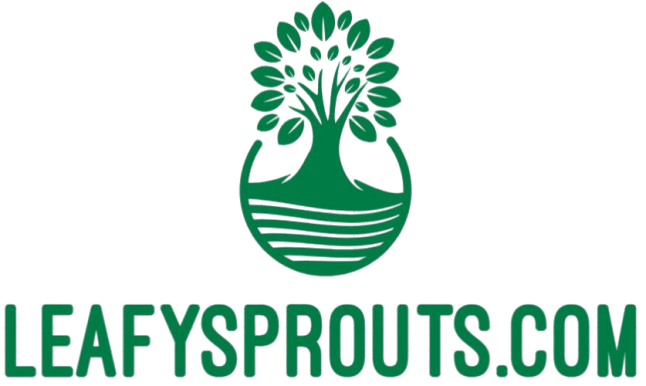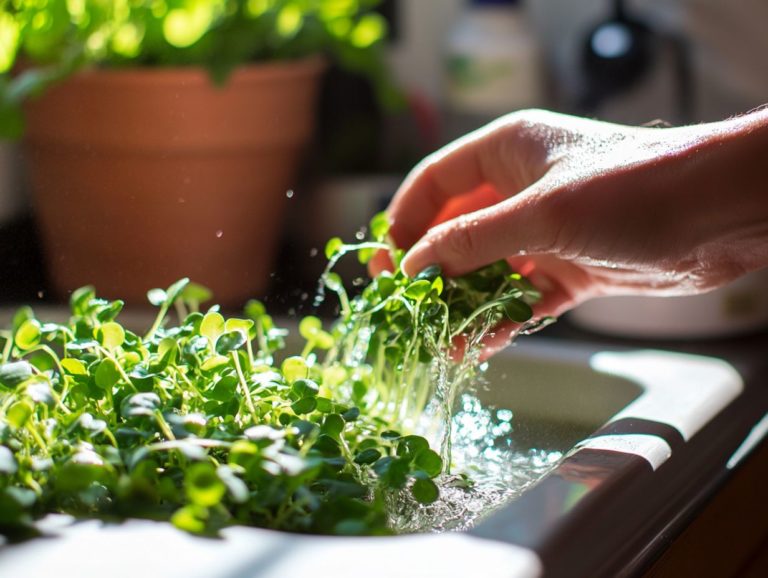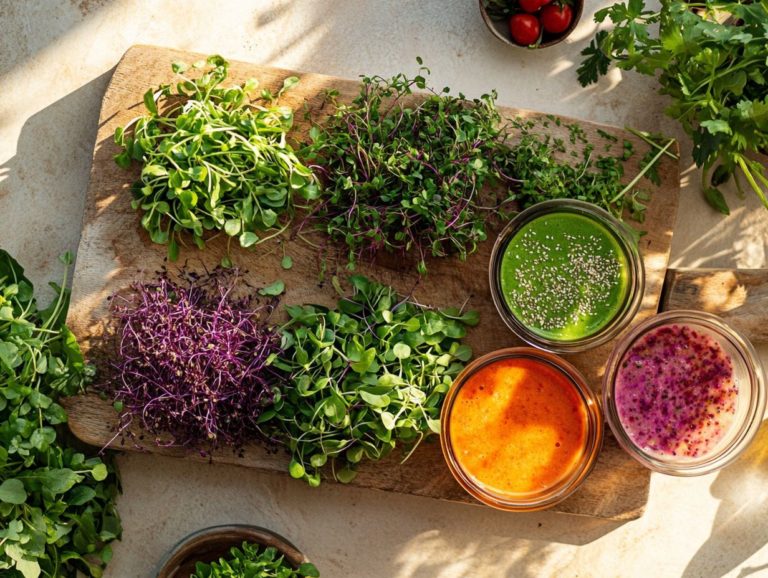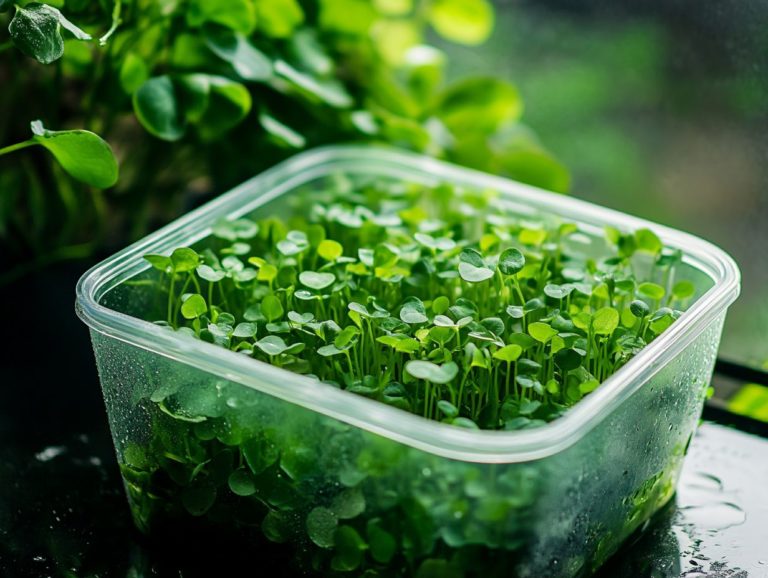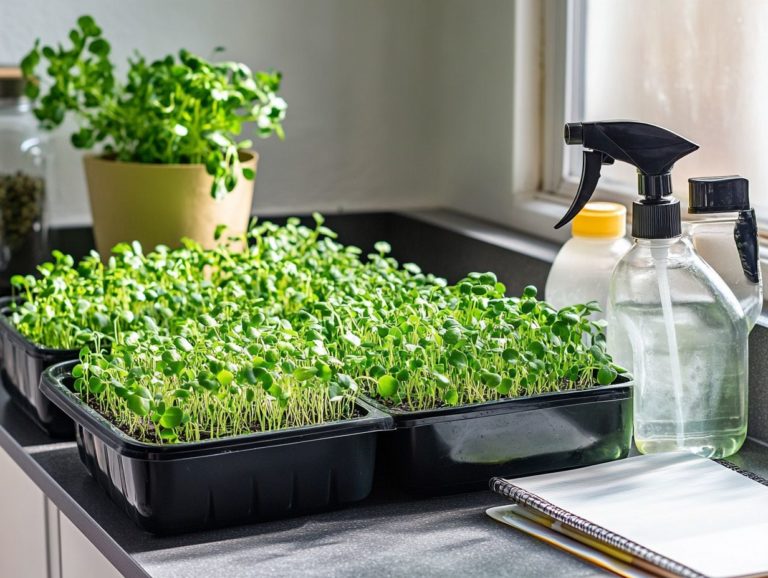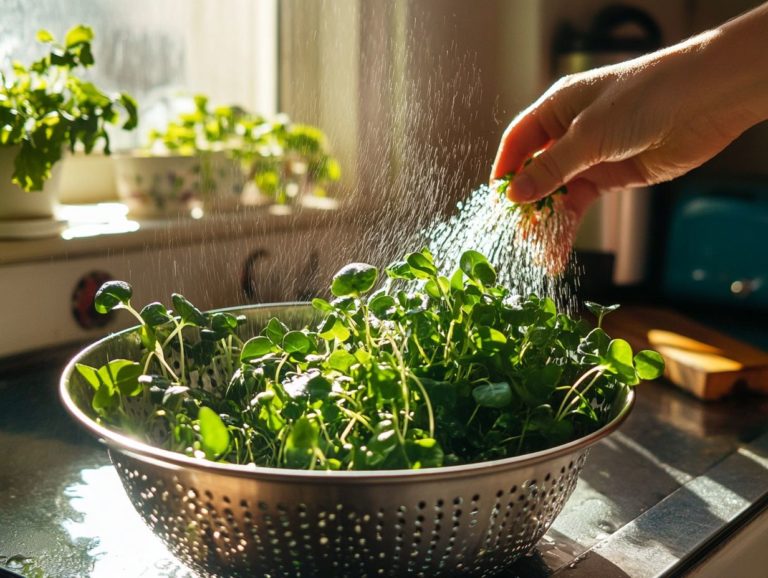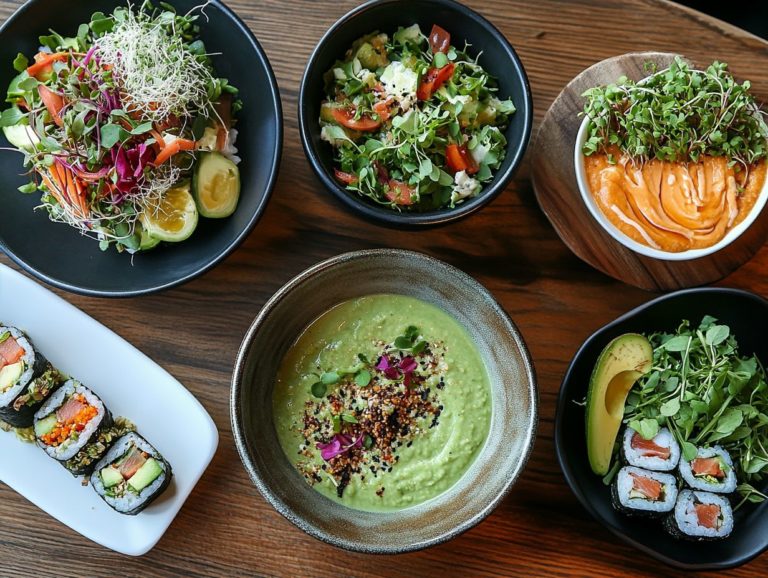How to Package Microgreens for Fresh Delivery
Microgreens are delightful little plants bursting with nutrients that have taken the culinary world by storm. When packaging them, it s essential to prioritize both freshness and visual appeal to attract consumers in grocery stores and restaurants.
Get ready to discover the best practices for packaging microgreens! This guide will help you choose the right containers and ensure they maintain their quality during delivery, especially for direct-to-consumer sales.
You ll also learn about innovative packaging techniques that can elevate your brand and help your microgreens shine in a crowded market.
Explore how the right approach can transform the way you deliver these vibrant greens to your customers while enhancing your branding.
Contents
Key Takeaways:
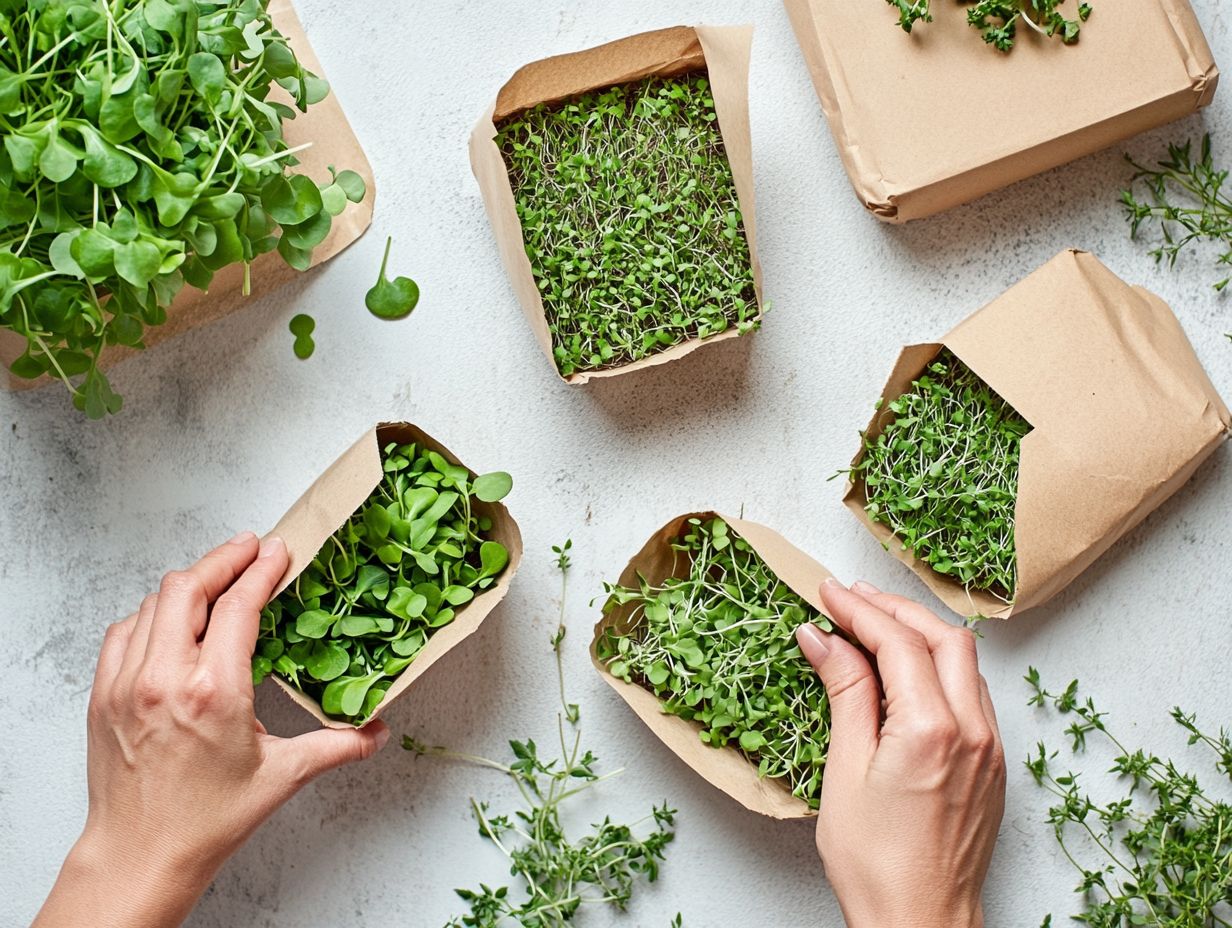
- Proper packaging keeps microgreens fresh and enhances customer satisfaction.
- Choosing the right containers and following good handling and storage techniques are critical for quality and appearance.
- Packaging can serve as a marketing tool to boost your brand, so be creative with your design.
What are Microgreens?
Microgreens are young, edible plants harvested right after the first set of real leaves appears. They deliver a delightful burst of flavor and nutrition that can elevate your meals. You ll often find them in salads, as garnishes, and in dishes in restaurants throughout Calgary and Canada, appealing to health-conscious customers.
With various options available think arugula, basil, and radish you ll be captivated by their vibrant colors and concentrated tastes.
Dive into lesser-known varieties like beet, cilantro, and mustard. Each offers its own unique flavor and health benefits, promoting a sustainable culinary approach. Packed with vitamins, minerals, and antioxidants, microgreens support eco-friendly eating habits.
Calgary’s growing market reflects a shift towards health-conscious eating, with restaurants increasingly featuring these greens on their menus. This trend boosts flavor and visual appeal, especially in farmers markets. It enhances your dining experience and encourages local growers to cultivate a diverse array of microgreens, nurturing a sense of community and sustainability within the food industry.
Why Proper Packaging is Important
Proper packaging is crucial for keeping microgreens fresh and extending their shelf life, matching your commitment to being eco-friendly in today s marketplace. Wise packaging choices significantly affect distribution, as grocery stores and farmers markets are leaning toward clamshells and biodegradable options that align with sustainability goals.
Your packaging directly impacts how customers perceive your product. Clamshells offer visibility and protection, while baker’s bags add an artisanal flair that suggests freshness and convenience, making them popular choices.
The trend toward minimalistic design not only looks great but also resonates with your desire for eco-conscious products. By prioritizing lightweight, recyclable materials, brands can effectively communicate their commitment to sustainability, fostering trust and loyalty among customers who value quality and environmental responsibility.
Best Practices for Packaging Microgreens
To effectively package microgreens, embrace best practices that enhance product longevity and uphold quality. These practices should resonate with customer values and adhere to packaging specifications set by label suppliers.
This means understanding the specific needs of fresh-cut microgreens and conducting thorough competitive research to pinpoint the most effective packaging solutions available, including how to store microgreens for maximum freshness, PLA bioplastic, a type of biodegradable plastic, and cellophane bags.
Choosing the Right Containers
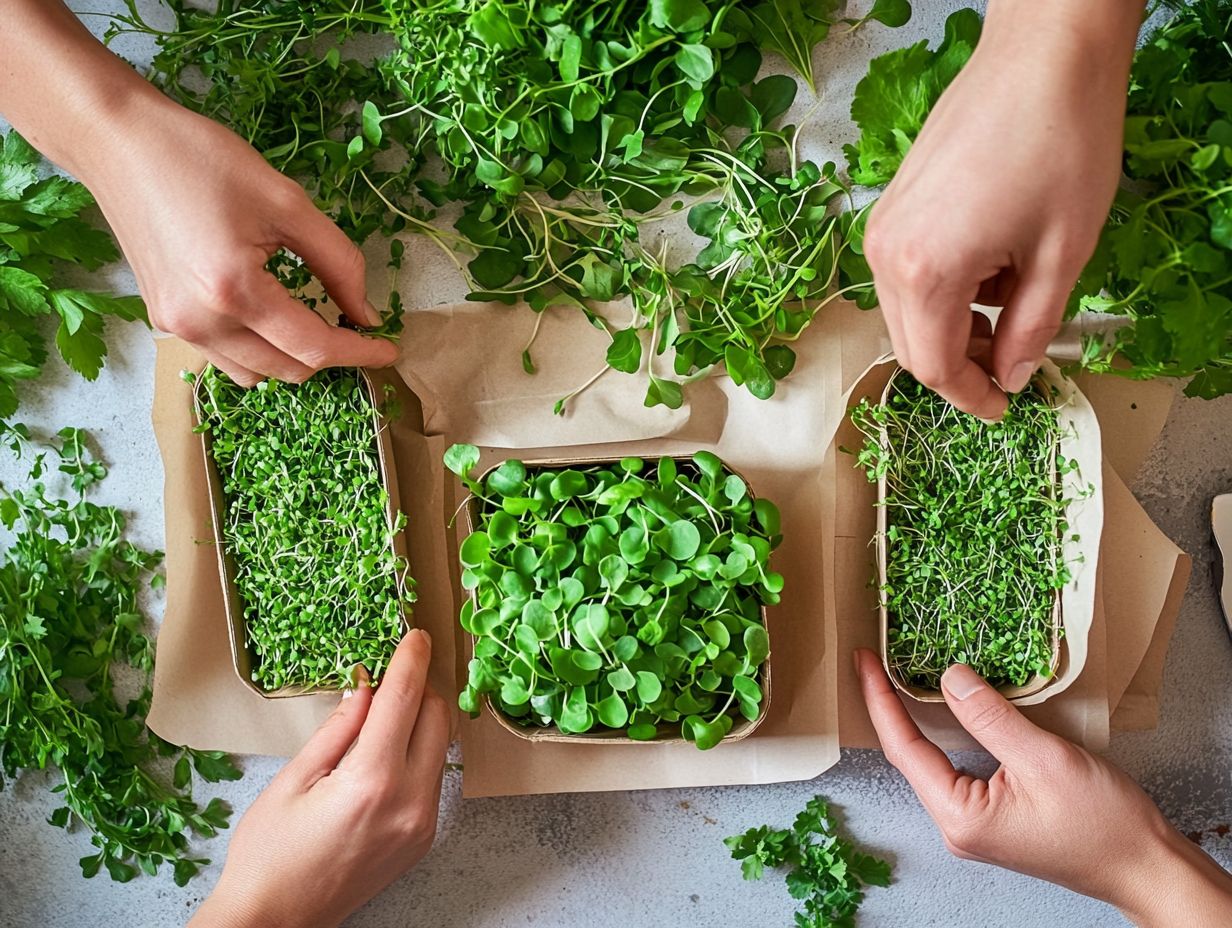
Choosing the right containers for packaging microgreens is crucial for ensuring their quality and enhancing customer experience. You have a range of options, including eco-friendly clamshells, compostable materials, and PLA bioplastic.
These options appeal to the growing demand for sustainable packaging solutions. Selecting the appropriate packaging material not only preserves freshness but also aligns with the increasing consumer demand for biodegradable solutions.
Clamshells have a rigid design that prevents crushing and offers excellent visibility, making them popular for attracting attention on store shelves. In contrast, poly bags provide flexibility and are lightweight, which can reduce shipping costs, although they might not offer the same level of protection.
Compostable options are gaining traction because they appeal to environmentally conscious consumers, allowing them to dispose of packaging without contributing to landfill waste.
These distinctions underscore the importance of choosing packaging that satisfies both the practical needs of preservation and the ethical values prevalent in today s market.
Ensuring Freshness and Longevity
Ensuring the freshness and longevity of microgreens during transportation and display is crucial for enhancing your overall customer experience. It also maximizes product shelf life. By implementing effective packaging techniques like humidity control and proper ventilation you can help microgreens maintain their vibrant appearance and nutritional value.
Maintaining the optimal temperature is essential. Exposure to extreme heat or cold can compromise quality during transportation, affecting product shelf life. Using insulation materials and ice packs during delivery can prevent spoilage, while breathable packaging minimizes condensation buildup.
Your customers will love fresh, vibrant microgreens! Customer feedback shows that well-packaged, fresh microgreens encourage repeat purchases and enhance satisfaction, resulting in positive word-of-mouth among customers across Canada and China.
Ultimately, your strategic management of environmental factors, combined with a keen understanding of customer preferences, plays a significant role in ensuring these delicate greens reach consumers in peak condition.
Packaging Techniques for Delivery
Implementing effective packaging techniques for delivery is essential for ensuring that your microgreens arrive in fresh condition and visually appealing whether they are destined for grocery stores or delivered directly to consumers through various packaging styles.
Consider factors like material choice, moisture control, and packaging size. These elements can significantly impact overall quality during transportation, enhancing the customer experience.
Choose the best packaging today to delight your customers and boost your sales!
Proper Handling and Storage
Proper handling and storage of microgreens are crucial for maintaining their quality and flavor. This ensures they meet your customers’ expectations for freshness and taste, whether in retail or restaurant settings.
By implementing best practices in handling like minimizing exposure to heat and light you can significantly extend the shelf life of these delicate greens, making them more appealing to restaurants.
Focus on maintaining optimal temperature ranges, ideally between 32 F and 41 F, to preserve the vitality of your greens. Keep direct light exposure to a minimum during transportation to prevent wilting, and maintain humidity levels around 90% to help retain moisture and enhance leaf texture. For more information, check out the best methods for storing microgreens.
As a retailer, you’ll benefit from using airtight containers that limit airflow and keeping microgreens away from fruits that can spoil nearby produce to avoid premature spoilage. Regularly checking storage conditions and turnover rates will ensure these delicious greens stay vibrant and appealing. For more detailed insights, refer to our guide on how to store different microgreen varieties, captivating your customers with their exceptional quality. This is essential for a successful sales strategy.
Shipping and Delivery Considerations
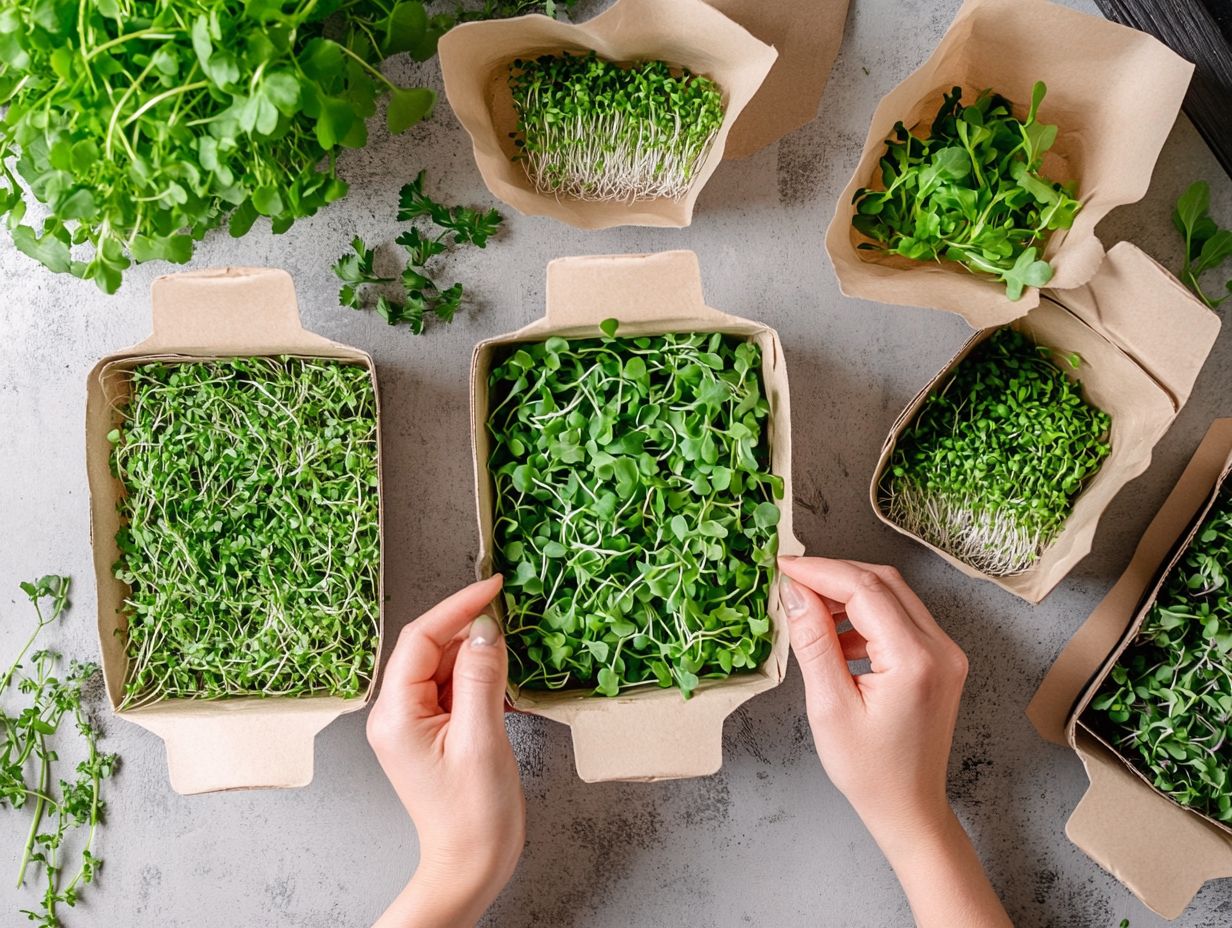
When shipping microgreens, you must consider various delivery factors to ensure they arrive in optimal condition. This enhances your customers’ experience with effective protective packaging methods.
Key elements such as transportation time and temperature control are essential for preserving the quality and freshness of these delicate products, making them suitable for both grocery stores and farmers markets.
It’s crucial to minimize exposure to fluctuations that could compromise their fragile structure. This ensures they remain fresh and appealing to consumers. For more on keeping them fresh, consider these storing microgreens tips. Timely deliveries are crucial since microgreens have a shorter shelf life compared to other produce.
Maintaining the appropriate temperature range throughout transit is vital; excessive heat can lead to wilting and a loss of flavor. Effective packaging solutions, like moisture-absorbing materials and breathable containers, offer physical protection while ensuring adequate airflow.
Implement these strategies to wow your customers and boost satisfaction in the competitive microgreens market!
Marketing and Branding with Microgreens Packaging
Marketing and branding are crucial to the success of microgreens. Effective packaging does more than just preserve freshness; it communicates your brand’s values to consumers. This significantly influences their purchasing decisions and reinforces your commitment to sustainable practices.
By leveraging innovative packaging designs and conducting thorough competitive research, you can elevate your market presence and forge deeper connections with your customers.
Stand Out Packaging Ideas
Creating standout packaging ideas for microgreens isn t just about grabbing attention; it s a powerful way to reinforce your branding and sustainable practices. This elevates the entire customer experience.
With unique designs, vibrant colors, and eco-friendly materials, you can set your products apart in a crowded marketplace and attract the growing number of environmentally-conscious consumers, including those who prefer direct-to-consumer options.
By embracing creative packaging solutions, you have the opportunity to cultivate a strong brand identity that resonates with health-conscious customers. For instance, opting for biodegradable containers or packaging that doubles as a planter not only promotes sustainable practices but also engages your audience on a deeper level.
Incorporating eye-catching graphics or local farm imagery can nurture a connection with the community while educating customers about the benefits of freshness and nutrition.
Thoughtful branding strategies that emphasize innovation and sustainability will boost your visibility in grocery stores and farmers markets. This will foster loyalty, ultimately enhancing customer engagement and driving sales through an effective sales strategy.
Explore these ideas and transform your microgreens packaging today!
Using Packaging to Enhance Branding
Using packaging as a strategic tool to elevate your branding is crucial for microgreens producers. It s not just about protection; it s your canvas for expressing brand identity and values.
By collaborating with a reliable label supplier, you can create visually striking and informative packaging that truly resonates with consumers, enhancing their overall experience.
When you prioritize aesthetics, functionality, and messaging, you effectively capture attention on crowded store shelves. Your products will stand out.
Beautiful designs evoke emotions and emphasize the freshness of your microgreens. Functional elements guarantee that your products remain safe and intact during transit.
Thoughtful messaging communicates vital nutritional information or sustainability practices, aligning perfectly with your brand’s core values. Working closely with label suppliers allows you to develop customized solutions that meet practical needs and tell the unique story behind each microgreen offering.
This fosters a deeper connection with your target audience.
Your Top Questions About Microgreens Answered!
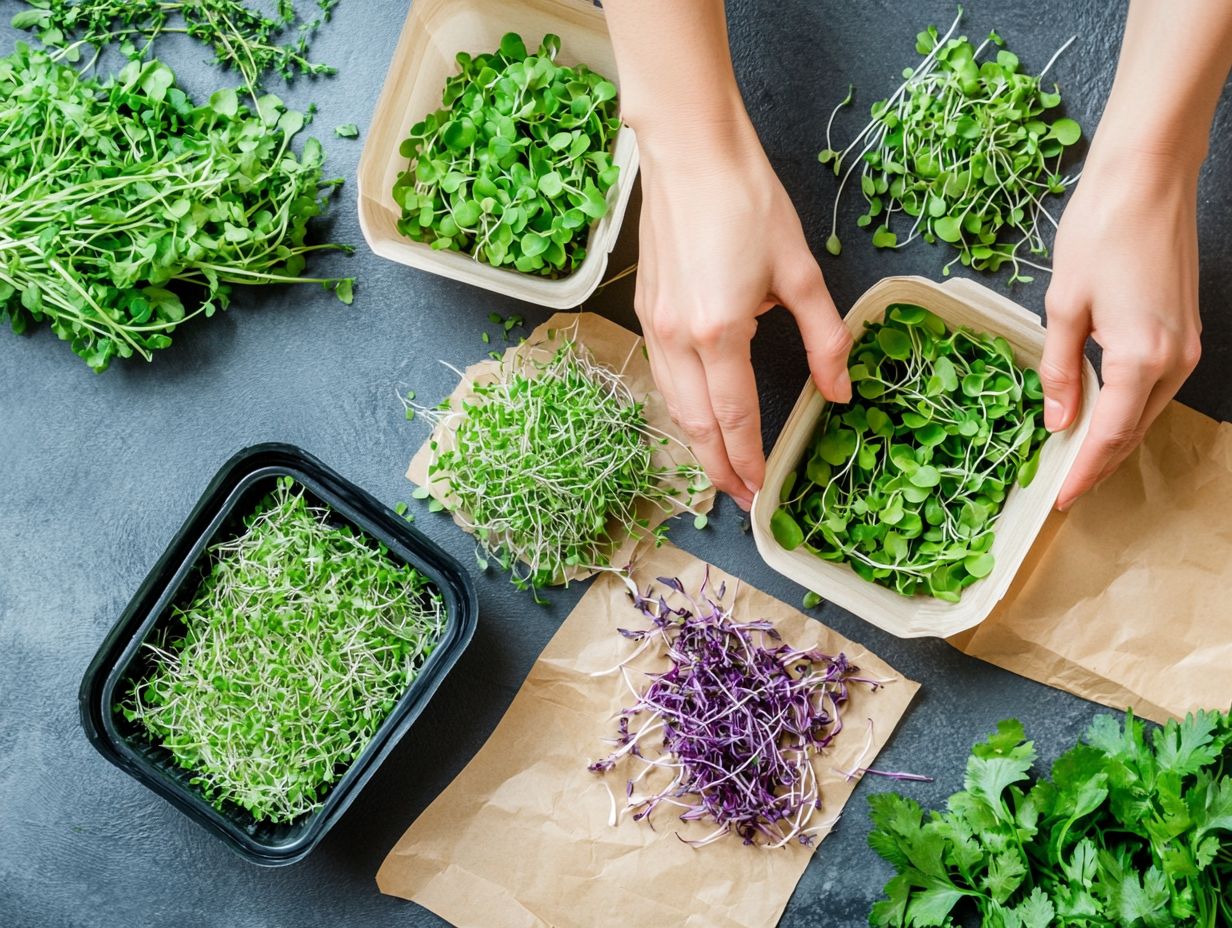
What are microgreens and why are they popular?
Microgreens are young vegetable and herb plants harvested at an early stage, typically within 10-14 days after germination. They are popular because they are packed with nutrients, have a high concentration of flavor, and are easy to grow.
How should I package microgreens for fresh delivery?
The best way to package microgreens for fresh delivery is to use plastic clamshell containers or resealable plastic bags. These options protect against damage during transit and keep the microgreens fresh.
Do I need to wash microgreens before packaging them?
Yes, it is recommended to wash microgreens before packaging them. Use cold water and gently swirl the microgreens to remove any dirt or debris.
Then, pat them dry with a paper towel or use a salad spinner.
How should I store packaged microgreens?
Packaged microgreens should be stored in the refrigerator at a temperature between 35-40 degrees Fahrenheit. Make sure to keep them away from ethylene-producing fruits or vegetables, as this can cause them to spoil faster.
Can I reuse packaging materials for microgreens?
No, it is not recommended to reuse packaging materials for microgreens. Reusing them can increase the risk of contamination and spoilage.
It is best to use new, clean packaging materials for each batch of microgreens.
What is the shelf life of packaged microgreens?
The shelf life of packaged microgreens depends on factors like the type of microgreens, packaging materials used, and storage conditions. In general, microgreens can last for 5-7 days when stored properly in the refrigerator.
Act quickly to ensure fresh delivery!
